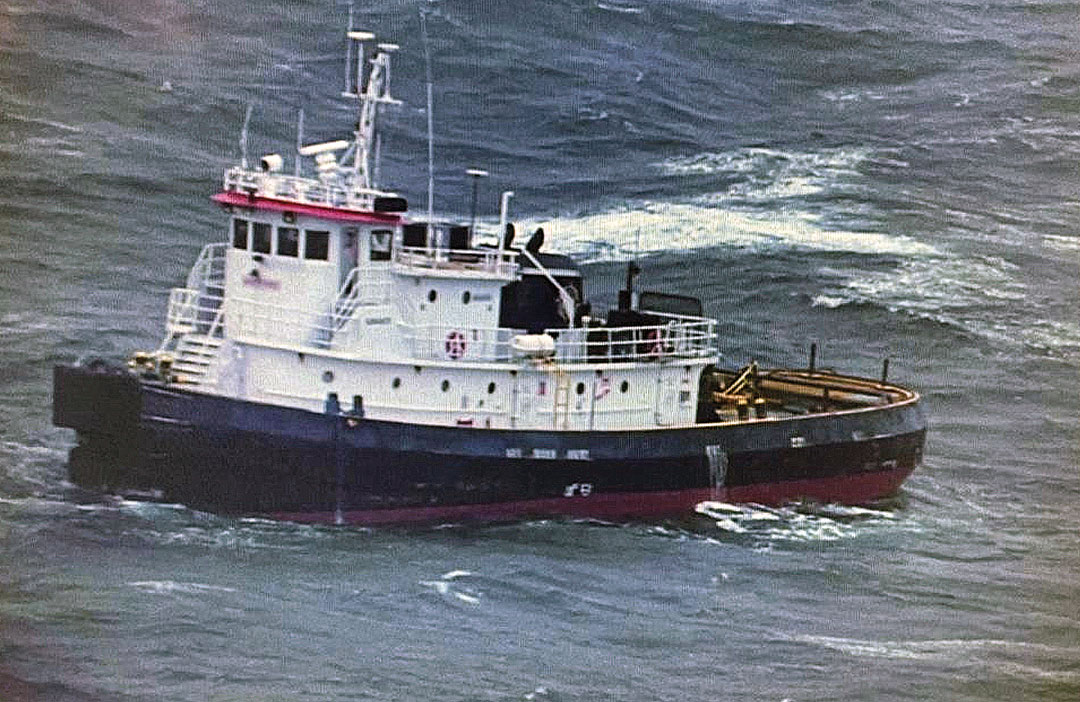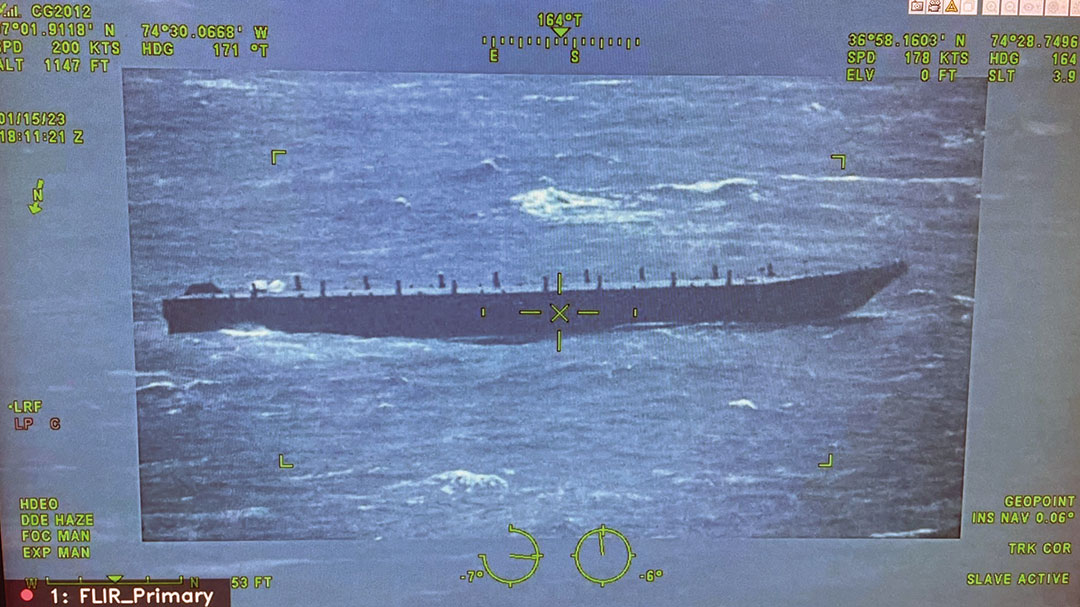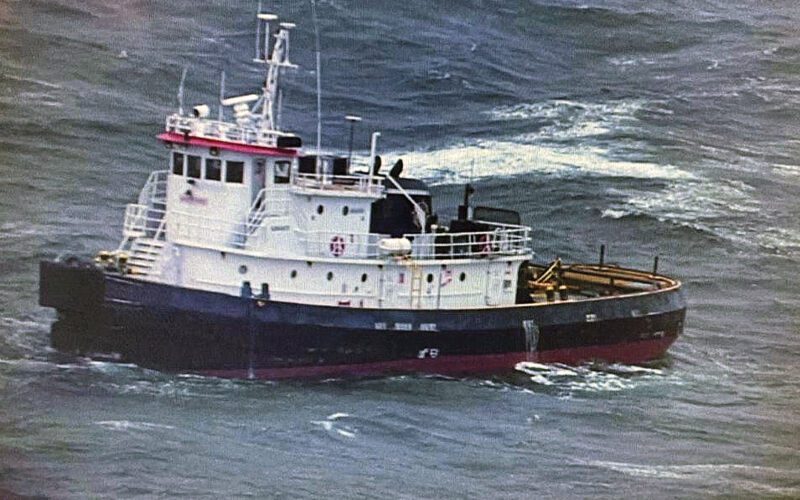
The U.S. Coast Guard hoisted seven crewmembers from a foreign-flagged tugboat off Maryland after the vessel lost propulsion and went adrift in stormy weather.
The 103-foot Legacy was towing the 290-foot deck barge B250 between New Jersey and the South American nation of Guyana when its towline ultimately became caught around both of its propellers, the Coast Guard said. Legacy became adrift at about 0330 on Jan. 14, and its crew was rescued later that evening.

“The tow line snapped and entangled in the propeller, leaving it loose in the water,” Coast Guard spokesperson PA3 Carmen Caver, of Public Affairs Detachment Baltimore, said via email. “When Legacy tried to make way to possibly get aid from another tug, the second propellers fouled. This rendered the vessel inoperable.”
According to the Coast Guard, Legacy towed the deck barge using a 1,000-foot towline. Additional details about the towing system used by the crew were not available.
However, the towing system incorporated a soft line, which ultimately became entangled on both props, according to Phil Risko, president of Northstar Marine of Cape May Courthouse, N.J., which coordinated the salvage.
Boss Marine of Guyana recently acquired the tugboat and barge B250, which were on a delivery voyage when the incident happened. Details about the crew during this run were not available.
The 3,900-hp Legacy is the former Seabulk Towing tug Goliath, which was built in 1981. It is powered by twin EMD engines and equipped with a single-drum HBL winch on its aft deck for towing. Details on B250 were not available.
Legacy got underway from Dorchester Shipyard in Dorchester, N.J., on Jan. 13 for Guyana with an intermittent stop planned in St. Vincent and Grenadines, AIS data showed. Tugs helped escort the vessels into Delaware Bay, where the crew planned to hug the coast while heading south.
The towline initially became snagged soon after the tow entered the unprotected waters outside Delaware Bay. Winds from the northwest began pushing the tow out to sea. The crew tried to maneuver toward shore under one engine when the line parted and fouled the second prop, Risko said.
Weather observations recorded by NOAA Station 44009, located roughly 26 nautical miles southeast of Cape May, N.J., show the northwest winds increased from 10 knots to more than 22 between the evening of Jan. 13 and the morning of Jan. 14. Seas built from 6 feet to nearly 8 feet by the evening on Jan. 14 when the crew was rescued.
Those northwest winds pushed the disabled vessel further from shore. The Coast Guard cutter Lawrence Lawson diverted to the scene and arrived at about 0830 on Jan. 14. The cutter could not reach the stricken tug due to rough seas and the loose line in the water.
“Later in the afternoon, the crew of Legacy decided they wanted to abandon ship (and) the only way to get them out safely was via hoist,” Caver said. “We launched an MH-65 Dolphin from Air Station Atlantic City and one from Air Station Elizabeth City. They arrived and hoisted the seven people from the tug around (1930).”
Legacy and B250 remained adrift after crew were rescued. Salvage teams placed a locator beacon on Legacy but could not get one onto B250, Risko said. Both vessels were drifting in the wind and current. Within a couple days B250 had floated more than 60 miles from shore.
Northstar Marine had no tugs readily available to perform the salvage. It hired the 2,400-hp Shannon Dann and 2,400-hp Charles James from Dann Ocean Towing and Stasinos Marine, respectively.
With a narrow weather window in the days following the rescue, they focused on recovering Legacy. The two tugs ultimately brought it under tow and returned it to Dorchester Shipyard on Jan. 19, Risko said.
As of late January, the whereabouts of B250 was not known. It is presumably still adrift somewhere in the Atlantic Ocean.

